#she's heavily inspired by John Carpenter's The Thing
Text

Erzsebet Bathori begins to shapeshift.
#hellsing#hellsing oc#hellsing fanart#hellsing fanfiction#my ocs#my art#bathori erzsebet#clip studio paint#gore#lesions of a different kind#look motherfucker i could probably have gone back over the gore and the saliva and spittle three more times before I was satisfied#i needed to call it here#she's heavily inspired by John Carpenter's The Thing#if Alucard goes eldritch and shadowy#she gets to go full necromorph just all flesh and skin and viscera and bodily fluids#popping veins and joints and bursting blood vessels atop horrific wet screeching noises#probably composed of the who-knows-how-many souls she's consumed over the years screaming in unison#i probably could've used more colors on the fleshy bits like splatter some green and purple or sickly blue here and there#but for a first attempt at a detailed gorey piece i'm happy with it#body horror ladies save me save me body horror ladies
19 notes
·
View notes
Text
1990: The Bronx Warriors (1982)
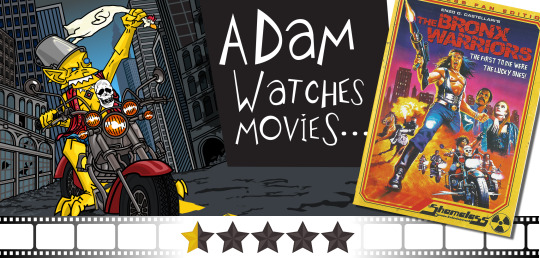
While I didn't enjoy this film, that doesn't mean you won't. No matter what I say, the people involved in this project did it: they actually made a movie. That's something to be applauded. With that established...
I watched 1990: The Bronx Warriors as part of my exploration of the “Road Warrior Post-Apocalyptic” genre. For the most part, the various imitators and derivatives have been aping the Mad Max franchise. This is the first time I’ve seen “inspiration” principally drawn from the other two establishing films of the genre: Escape from New York and The Warriors. The results are one of the most uninteresting and cheap attempts I’ve seen so far.
In (the then futuristic) year 1990, New York’s Bronx is dominated by crime and declared a No Man’s Land. The police have given up all attempts to bring order to the raving biker gangs who roam the streets. Ann (Stefania Girolami), the 17-year-old heiress to the nefarious Manhattan corporation runs to the lawless wasteland to hide from the responsibilities she will soon inherit. There, she befriends The Riders and their leader, Trash (Marco Di Gregorio). To get the woman back to the boardroom where she belongs, the Manhattan Corporation hires a mercenary named Hammer (Vic Morrow) to do anything it takes.
It begins as a thinly veiled rip-off of John Carpenter’s memorable action film and then turns into a cheaper, lazier, and endlessly duller version of Walter Hill’s cult-classic. You go in assuming this will be a cheap film; the other Post-Apocalyptic adventures didn’t exactly have big budgets. Even so, this is inexcusable. This film is too low-grade to deliver even the mildest form of vehicular carnage, which is a shame because the Warriors’ – I mean the Riders’ – motorcycles look so flimsy you know they’d fly in a million pieces if they hit even a medium-sized pothole. I’m not joking when I say it looks like they bought a bunch of Halloween decorations – on November 1st when they’re heavily discounted- and then glue-gunned them onto the steering wheel of their motorcycles.
The performances are horrible and the actors are made to look even worse by the ADR. Everyone’s all mush-mouthed, and with the home release’s lack of subtitles, you’ll struggle to understand what anyone is saying. Had this plot had any kind of substance or complexity to it, you’d be completely lost. Nonetheless, you keep watching, hoping there will be some cool stunts or hand-to-hand combat scenes to make this effort worth your time. Your hope is in vain.
The only way to draw enjoyment from 1990: The Bronx Warriors is by making fun of it. Even so, it doesn’t have much to offer. It’s agonizingly dull and so obviously devoid of any kind of passion, enthusiasm or effort. The one thing that might bring a smile to your face are some of the characters’ names and the art direction. If it seems as though I’m grasping at straws, I am but how could you not laugh at characters named Hotdog (Christopher Connelly), Witch (Elisabetta Dessy), The Ogre (Fred Williamson), Ice (John Loffredo) and… Paul (Rocco Lero)? Some of the random gangs receive given quirks that make them mildly diverting, such as a group of mimes who perform a coordinated dance, but those add nothing to the story. It’s a flat picture, obviously shot in a run-down neighbourhood. It drains the life out of you.
I suffered through 1990: The Bronx Warriors so you wouldn’t have to. There’s no reason to see this, even if you enjoy the stories it’s shamelessly burglarizing. I didn’t think it could get any worse than Exterminators from the Year 3000, but here we are. To survive these films, I’m going to have to set the bar way lower than expected. This Italian production has not one, but two sequels and I can’t imagine either being any better than this. (On DVD, August 4, 2018)
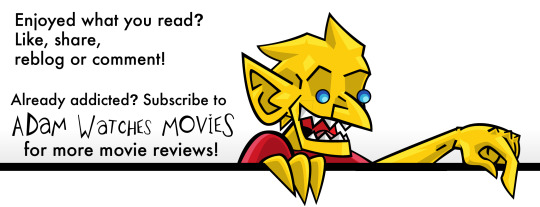
#1990: The Bronx Warriors#movies#films#movie reviews#film reviews#Enzo G. Castellari#Elisa Livia Briganti#Dardano Sacchetti#Vic Morrow#Christopher Connelly#Fred Williamson#Mark Gregory#1982 movies#1982 films
2 notes
·
View notes
Text
samantha carpenter - supernatural verse

important notes : this verse is inspired by me.lissa barrera's character joey from the 2024 movie abigail. it's not explicitly in the supernatural fandom, it's just the verse i'll use if we're writing in a world with things that are not natural.
heavily affiliated with @batcaller .

after the events of s.cream 6 :
sam - now 26 - makes the heartbreaking decision to leave the core four, she can no longer take keeping them at such a high risk of another ghostface attack by staying. packing a bag, she leaves while they're in class with nothing but a note & enough money to cover rent for a few months left on the table in the apartment.
changing her name to joey moreno she bounces between a couple of towns in different states finding odd jobs usually at a bar or as a waitress. it wasn't until an odd man sat quietly at the end of bar one night & waited until closing to have a conversation with her, calling her by sam to make sure he had her full attention.
he introduced himself as john & offered her $10,000 upon completion of a job he's hiring her for. she doesn't trust him but the money could give her a new life & she could send some to tara, who she still keeps tabs on. stupidly, she agrees before finding out more details which is how she ends up trapped in a house with a vampire.
when she walks through the door, covered in blood once again, sam feels alive. john is there, handing her a towel as he holds the car door open for her. on the drive back to her studio apartment, john tells her everything about the things that go bump in the night & a job proposition, a supernatural hunter with the promise of even more money. there's a moment of hesitation but still, she shakes his hand & it feels like she just sold her soul to the devil.
settling in chicago, the hustle & bustle of the city reminding her of new york, sam finds a decent one bed room apartment & a job at the local cop bar where she listens to their conversations for any cases that seem not natural.
that's where she meets jim gordon ( @batcaller ), a young cop & a regular who she can't seem to keep her distance from. he tells her about his brother & sister in law when they were taken by "something" & she consoles him, wanting to tell him the truth but instead gives him a vague answer about how freak accidents are the human answer to things that aren’t. it's not much but she hopes it gives him some peace of mind that he isn't crazy.
they grow closer & maybe some nights they're closer than others but sam keeps her walls up, terrified to get close with all her baggage & tendency to put those she loves within death's grasp, jim deserves the white - picket fence life she could never have. she couldn't be happier when he finds his wife & gets promoted at the station, bringing a nice bottle of alcohol to any of the barbecues they host.
the hunts keep coming, picking up a few of her own on the side specifically in chicago whenever she catches wind of something at the bar. it isn't until jim's wife is taken in the middle of the night, until jim is on her couch telling her what he saw does sam finally tell him everything.
now they're partners, working together to hunt down whatever it was that killed his wife & anything else that comes from nightmares.
#✧ . * merida » ooc .#batcaller#♕ ⁺ · samantha carpenter » headcanon .#♕ ⁺ · samantha carpenter » james gordon .#✷ ° · james gordon .#♡ . * dynamic » samantha carpenter & james gordon ( batcaller ) .
1 note
·
View note
Text
Good Music, Good News 3.0
We continue to be touched and moved by the depth of sharing and Good News that is coming from the Cyber PR Music camp. Nd we are not surprised. Ariel and her team have sent us some of our favorite gems over the years. We are pleased to bring you part 3 of our 4 part series.
Please Follow the Spotify Playlist below to hear all of these amazing tracks.
[HERE]
Thanks to all of the artists who shared their music AND their good news.
Mara Measor | “Love Will Find You”
Is Now An Expectant Mother During A Global Pandemic

I had a miscarriage back in February, right before the pandemic hit. Then was able to get pregnant again a few months later! We had another scare at our first ultrasound and was flagged with a higher risk of our baby having chromosomal abnormalities, but upon further tests the concerns were cleared. And I'm finally getting used to the idea of having a baby boy next year. It's been such a roller coaster, but I'm riding it. :)
John Ellis on behalf of Val Starr & The Blues Rockets | “Whether Blues (2020)”
Experienced Loss, Family Members With COVID & Made Music To Heal

Our daughter-in-law came down with Covid and is still fighting it, and our granddaughter Ariella tested positive as well, but being eight years old, she didn't really exhibit any symptoms. Lost a couple of friends to pneumonia and strokes, cancer in some other friends, car accidents wracked up a good friend, and then the election happened. Life rolls on, faith in our Higher Power keeps us sane, and had a lot of time to work on recordings this year. Val Starr, my wife and bandmate, has written a great blues song that we'd like to share with you about all of us pulling it back together again. Called "Whether Blues" , whether you're right, whether you're wrong, don't mean a thing till we get along"
Tabitha Chapman | “Celebrity Boyfriend”
Got A Publishing Deal

I am immensely grateful to God that despite the hardship, sorrows, pains and restrictions that typified the year 2020, I was able to release 3 singles, and I also got myself a publisher.
Valerie Romanoff | “Pink Skies over Still Water”
Created An Online Music Festival About Mindfulness & Meditation

Without the hustle of preparing and traveling for my live events with the Starlight Orchestra, I stayed home and developed a way to share the energy and messages in my Healing Music albums. I came up with an online show called "Groove Into Bliss: Musical Meditation & More" where my guests and I talked about the benefits of relaxing and releasing stress, the power of music to open the channels to well-being, and offered guided meditations. We spoke of tips and tools for positive thinking, manifesting the life we desire, and the many ways we can use music to boost our joy! Through the online show I made many connections and was invited to be a guest on many high-vibe broadcasts and events, and I was invited to wrote a chapter in an upcoming book titled “The Wellness Universe Guide To Complete Self-Care: 25 Tools For Happiness.”
Apostrophe Music | “Keep the Hope Alive!”
Released Home-Recorded Music During The Pandemic

I released whilst we were in the heart of the lockdown during the month of April. As India went into a historic lockdown with over 1 Billion people being asked to stay indoors, the air of anxiousness and uncertainty brought out this song called Keep The Hope Alive! The only feeling we all had at that moment in time.
I felt like it was a message that needed to get out there and once we recorded it out of my home studio (no access to studios because of the curfew lockdown situation) I posted the song on to Youtube and Facebook with a video and subsequently after that we did an official audio release in July. So this is the story about this song I released as the whole world went into lockdown.
Len Seligman
Turned The Tragedy of Losing His Mother Into Beautiful Songwriting

Like a lot of songwriters, I was moved to write a song about COVID-19. While neither my health nor economic situation suffered, the pandemic made it so that I could only visit my mother a couple of times in the last 6 months of her life, despite her living just 20 minutes away. She died in September at the age of 97.
When I looked inside to see what story I wanted to tell about the pandemic, I quickly knew that it would be about the beautiful ways people have shown up for one another. Yes, there's been enormous suffering, but it's also been extraordinary to see the tremendous upwelling of compassion that the suffering has brought out. That is what inspired this song.
Steve Andrews | “Where Does All The Plastic Go?”
Had A Successful Release That Led To Idea for Ocean Aid Concerts
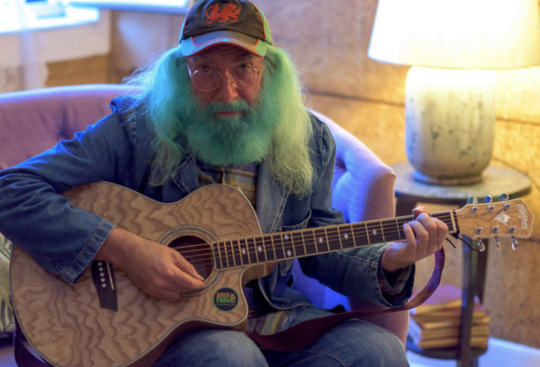
My song “Where Does All The Plastic Go?” is getting included on playlists on Spotify, getting great reviews, and opening doors for me in unexpected places. This is wonderful because I'm thinking big and also came up with the idea for Ocean Aid Concerts to raise awareness of threats to the oceans. I am leading the way with songs on the subject of plastic pollution and my song could be included in any concerts that happen.
Richard Strange | “Christmas of Hope”
Used Hopeful Christmas Anthem To Fundraise for Charity

We (Musicians Together & Sweet Charity Choir) released Christmas of Hope, a single produced in aid of Help Musicians UK, last Friday December. We are donating the proceeds to Help Musicians UK, a charity that you may be aware of, specifically to their 3rd hardship fund. Some quotes from the charity's CEO, James Ainscough: “Music has been a unifying force that’s supported and entertained us all this year, more than ever before.” "But for tens of thousands of music creators across the UK the impact of lockdown and social distancing on their ability to earn, to create and to connect, has been disastrous for their finances and mental health.” "This 99-year-old charity has been in the privileged position of financially supporting over 21,000 musicians this year and we couldn’t have done it without the generous help of music lovers across the length and breadth of the country.”
Jody Whitesides | “A Perfect Man”
Created Deeper Relationships With Fans

I have been changing my approach to music this year. In doing so it increased the response I got from people on social media and via email. The most powerful thing was having a female fan tell me that the song “A Perfect Man” had brought her to tears. The reason, she could feel the love of the person singing to his counterpart and how he didn’t want to be put on a pedestal to fail the love of his life. Which is the main theme of the song. It was great to hear it hit home with a fan.
Andrea Kremer (The Aeon Wanderers) | “Don’t Say Anything”
Formed A Musical Duo via Facebook Groups

After 20 years promoting other people's music for a living, I partnered with a multi-instrumentalist/songwriter that I met in a Facebook music group, and we formed a musical duo called The Aeon Wanderers. My bandmate lives in Scotland and I live in Boston, so even before COVID-19, we were working remotely, collaborating on lyrics in a Google doc and doing videos "together" using green screens. We started by recording covers, but soon we were working on originals, and in August 2020 we released our debut album, "Fictional Histories." Being on the artist side of the equation rather than the marketing side has been eye-opening and fun!
Barbara J. | “Merry Christmas, Darling”
Has A Holiday Release Airing on World Indie Network Radio

My Christmas cover single, "Merry Christmas, Darling," has been selected to air on World Indie Network Radio's (WNIR) Holiday Spectacular Radio Special! This song, a holiday classic from The Carpenters, also serves as the pre-release to my Carpenters cover album, which I plan to release early next year.
Raphaela Gilla | “Michael’s Mantra”
Guided A Troubled Fan Through Meditation And Towards Healing

One of my fans wrote me a message that she was not feeling well and asked me if I could help her. I felt that the really needed help and gave my phone number immediately. In our conversation she told me that it was hard for her to breathe, and she felt a lot of fear. I could hear her breathing heavily.
I guided her into a meditation – I guided her to consider her breathing as an angel's feather. This opened her breath tracks to the earth and to the sky. I noticed how she slowly began to relax and began to breathe deeper. She cried out of relief, thanked me and asked me about my fee. I told her that this is a gift from me to her. It was a very touching moment.
We stayed in contact. Since then, she grows and feels better.
John Mueller | “I’m Doing Fine”
Brought Joy With His Latest Release

My fave moment of this challenging year was when a complete stranger wrote to me that they heard my new track "I'm doing fine" and how it was uplifting to them and brought some joy. I appreciated they took the time to notify me and to bring joy with my music is my ultimate goal. Getting this release out there and the entire album "You are Here" its included on during this year made a positive note for 2020.
Nia Ocean | “This Christmas”
Channeled A Christmas Song To Help Us All Shine Our Inner Light
youtube
About two weeks ago, I saw an insta story from a dear friend of mine which literally “woke me up”! I got so inspired that the next day I had written a whole song, a Christmas song that is. The song is called “This Christmas'' and I made it really to remind us that WE make Christmas what it is.. our spirit, our love, our cheer, it’s OUR light that gives it all meaning. So even though 2020 has been a tough year, we can still choose how to end it. It’s easy to expect and allow for Christmas 2020 not be special because it will be so different due to quarantine, limited travel and lost loved ones, but this song is a ray of light in these times of darkness and difficulty, reminding us of what matters most and that we all have a light within us to shine and share with our ourselves , our dearest ones, and the world...especially this Holiday Season.
Stay tuned… There’s more Good News Coming!
1 note
·
View note
Text
WEDNESDAY 13 | Debuts lyric video for 'Monster' (Feat. Cristina Scabbia)

Just days away from kicking off their North American tour, WEDNESDAY 13 and his boo crew have debuted a new lyric video for the latest single, 'Monster' (Feat. Cristina Scabbia of LACUNA COIL) from their recently released album, 'Necrophaze,' that is available now from Nuclear Blast Records.
Watch the lyric video for 'Monster' here: https://youtu.be/FE_m7Ya9c6s
Purchase 'Necrophaze' here: http://www.nuclearblast.com/w13-necrophaze
Purchase 'Necrophaze' bundles here: https://theoraclemanagementmerch.com/collections/wednesday-13
“'Monster' is the 1st WEDNESDAY 13 song recorded to feature guest vocals. I wanted something different than I had ever tried before and I wanted a female vocalist. Cristina was the perfect choice for this song. I gave her the lyrics and some minor details, and she came back with what you hear. She totally floored us with her amazing vocal range and adding a new element never heard on one of our songs before.” – WEDNESDAY 13
“This collaboration was born from blackness. WEDNESDAY and I are both fans of the darkest vision of art and music, and when I was asked to sing with him for the song 'Monster', I immediately visualized his concept and shared it with pleasure. What I love about this song is that some people in life are taking the worst out of us... but demonizing it all and pushing away the tension through notes is the best thing to do.” – Cristina Scabbia
WEDNESDAY 13’s 8th studio album, 'Necrophaze,' is available now from Nuclear Blast Records. Featuring special guest appearances from, Alice Cooper, Roy Mayorga (STONE SOUR), Alexi Laiho (CHILDREN OF BODOM), Jeff Clayton (GG Allin’s MURDER JUNKIES) and Cristina Scabbia (LACUNA COIL) among others, 'Necrophaze' shocks and surprises with a cauldron of monster riffs and haunting lyrics and have listeners feening for more.
Heavily influenced by real-life night terror occurrences of WEDNESDAY himself, historical serial killers, and a slew of 80’s horror films, the ideas behind 'Necrophaze' are bizarrely familiar, frightening, and a hell of a lot of fun. Being a collector of both media and toys, WEDNESDAY 13 was inspired by a craving for variety to create dual album artwork for this release (seen below). The covers showcase either end of the horror spectrum with a 'Creepshow' comic book vibe for the LP artwork, and the eeriness of something akin to John Carpenter’s 'The Fog' adorning the CD.
More from 'Necrophaze' :
'Zodiac' Trailer - https://youtu.be/AFhqlXv1nCw
'Decompose' Visualizer - https://youtu.be/mdqrNZOwzzc
'Bring Your Own Blood' Visualizer - https://youtu.be/B1iZ6KHx7KQ
'Necrophaze' Visualizer - https://youtu.be/qY7i3Y04ejo
'Necrophaze' Commercial - https://youtu.be/Btc7dTOff-Q
Necroflakes Cereal Commercial - https://youtu.be/Btc7dTOff-Q
WEDNESDAY 13 live:
w/THE 69 EYES, THE NOCTURNAL AFFAIR, THE CROWNED
Jan 24 - Brooklyn, NY - Knitting Factory
Jan 25 - Boston, MA - Brighton Music Hall
Jan 26 - Syracuse, NY - Westcott Theater
Jan 28 - Flint, MI - The Machine Shop
Jan 29 - Chicago, IL - Reggie’s Rock Club
Jan 30 - Minneapolis, MN - Fine Line Music Cafe
Jan 31 - Lincoln, NE - The Royal Grove
Feb 1 - Denver, CO - Oriental Theater
Feb 3 - Seattle, WA - El Corazon
Feb 4 - Portland, OR - Hawthorne Theater
Feb 6 - San Francisco, CA - Bottom of the Hill
Feb 7 - West Hollywood, CA - The Whisky A Go Go
Feb 8 - San Diego, CA - Brick By Brick
Feb 9 - Mesa, AZ - Club Red
Feb 11 - Dallas, TX - GMBG
Feb 12 - New Orleans, LA - Southport Music Hall
Feb 14 - Orlando, FL - Soundbar
Feb 15 - Atlanta, GA - Masquerade
Feb 16 - Nashville, TN - The Basement East
Feb 17 - Asheville, NC - The Orange Peel
Feb 18 – Lexington, KY – Manchester Music Hall
Feb 19 - Richmond, VA - Canal Club
Feb 20 - Pittsburgh, PA - Craft House
Feb 21 - Cleveland, OH - The Odeon
Feb 22 - Reading, PA - Reverb
https://officialwednesday13.com/
https://www.facebook.com/officialwednesday13
https://twitter.com/officialwed13
https://www.instagram.com/mrmotherfucker13/
https://www.youtube.com/WedinHollywood
3 notes
·
View notes
Photo

Horror.
Letterboxd presents our community’s 25 top rated horror films of all time.
With the release this month of the newest Halloween, and an embarrassment of riches in the form of thousands of new horror film reviews thanks to all the Hoop-tober / Shocktober / 31 Days of Horror challenges, we are feeling brave enough to open the crypt and pull out the Letterboxd community’s 25 Highest Rated Horror Films of All Time.
Don’t @ or stab us, these are computed from your ratings of all feature-length films tagged in our horror genre, as at 24 October 2018. It’s a wide-ranging list, with some perhaps surprising omissions—for example, the original Halloween, Night of the Living Dead and Evil Dead 2 all just missed the cut. See the full list or read on for data insights and member reviews of our highest rated horrors.
Strangling the numbers:
Though there is some genre crossover (into comedy with Young Frankenstein, mockumentary with What We Do in the Shadows and One Cut of the Dead, and zom-rom-com with Shaun of the Dead), these films are all categorized as horrors by us (and IMDb).
In the battle of great horror decades, the scary sixties wins with seven films, over five films from the slasher seventies and three from the evil eighties. Shout out to the terror twenties, with three films.
By country, USA has most films in the list, but Japan comes in strong second with four, Germany has three and France, Sweden and the UK are represented with two each. India, New Zealand and the Czech Republic also make the cut.
The most obscure film on the list (from a Western perspective) is Manichitrathazhu, from Kerala-born director Fazil, watched by just over 250 members.
All the directors are dudes. We can’t make any excuses for that, but we can point out that, behind-the-scenes and on-screen, women played important roles in these films. The Phantom Carriage, for example, is based on the novel by Sweden’s Selma Lagerlöf, who in 1909 was the first woman to win the Nobel Prize in Literature. And what would Jaws be without the editing prowess of Verna Fields?
There are five films on the list from this century, some by directors of color, including Jordan Peele, Jemaine Clement and Taika Waititi. Roll on the 21st century of horror.
On that note: this top 25 is based on member ratings, but we also have a popularity index—based on the sheer amount of activity for each film regardless of rating—which produces quite a different list, heavily favoring the 21st century.
Letterboxd’s 25 Highest Rated Horror Films (as at October 2018):

1. Psycho (1960, USA)
Directed by Alfred Hitchcock
“Throughout his career, director Alfred Hitchcock has enriched the world of cinema with some truly groundbreaking thrillers and despite that, Psycho feels like something of a first from him. It’s his first stint with the genre of horror, it breaks through the barriers of censorship unlike any film before and over the years, it has played a major role in influencing not only films but pop-culture as well.” —CinemaClown
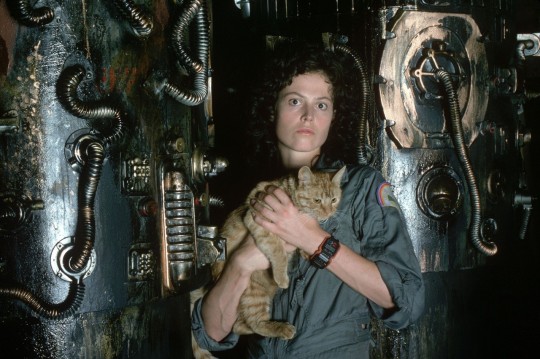
2. Alien (1979, USA)
Directed by Ridley Scott
“When shit hits the fan it comes with the best first impression of any monster. PERIOD.” —TKettle
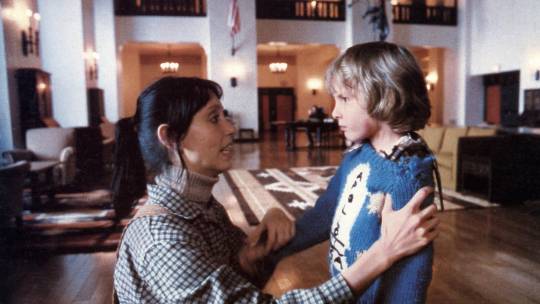
3. The Shining (1980, USA)
Directed by Stanley Kubrick
“As soon as Jack Torrance is in frame, that uneasy feeling takes over. I feel as though I wish I could warn all of the other characters in the movie to walk on eggshells, don’t upset him! Maybe you shouldn’t talk to him right now! Can’t you see it! Just leave him alone! There has never been another character to give me such all-consuming anxiety.” —HollieHorror

4. The Thing (1982, USA)
Directed by John Carpenter
“The man responsible for the movie’s stomach-churning physical effects deserves most of the credit for its appeal and success. Rob Bottin worked so hard he was hospitalized for exhaustion, pneumonia and a bleeding ulcer! And he was only 21 at the time! Pure underrated genius.” —Josh Stoddard
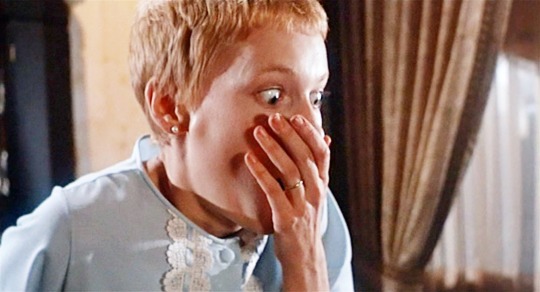
5. Rosemary’s Baby (1968, USA)
Directed by Roman Polański
“I’m awestruck by how good this is. Every little detail from the very beginning means something and you really experience exactly what Rosemary experiences. Masterful spectatorship alignment.” —Sean Upton
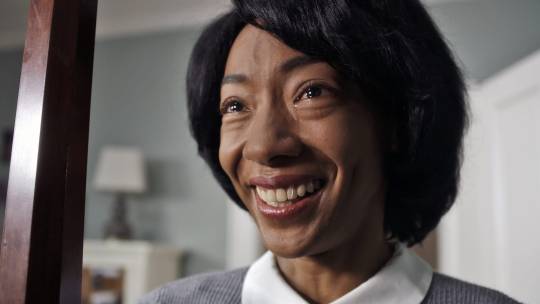
6. Get Out (2017, USA)
Directed by Jordan Peele
“When you prod underneath the surface here there’s so much just waiting to be unpacked. As a piece of writing it’s a masterclass in foreshadowing and subtext.” —Alex Secker
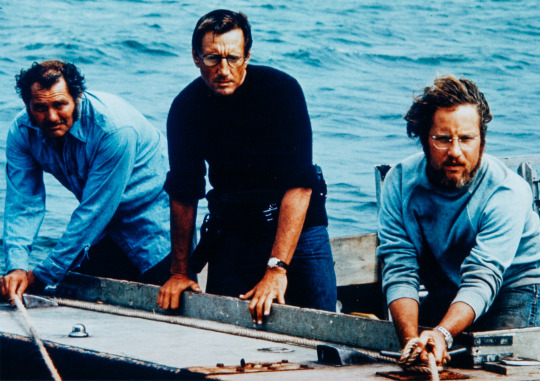
7. Jaws (1975, USA)
Directed by Steven Spielberg
“Bruce, the mechanical shark, still works today. Even with all the VFX-heavy films that are commonplace now, the shark is [as] scary and compelling now as it was in 1975. The camerawork is masterful, and it feels like films now are still trying to catch up to what was happening behind the camera on this movie.” —EJ Moreno
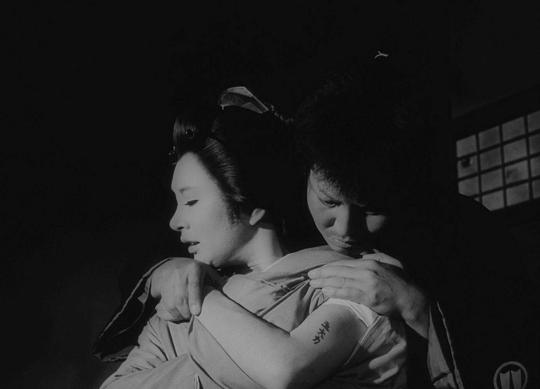
8. 修羅 (Demons) (1971, Japan)
Directed by Toshio Matsumoto
“Matsumoto è stato uno dei più grandi innovatori del cinema giapponese e fonte di ispirazione di grandi registi del cinema mondiale. Quest’opera non fa che confermarne l’importanza e la genialità.”
Translation: “Matsumoto was one of the greatest innovators of Japanese cinema and a source of inspiration for great world cinema directors. This work confirms his importance and genius.” —Tonino Mannella
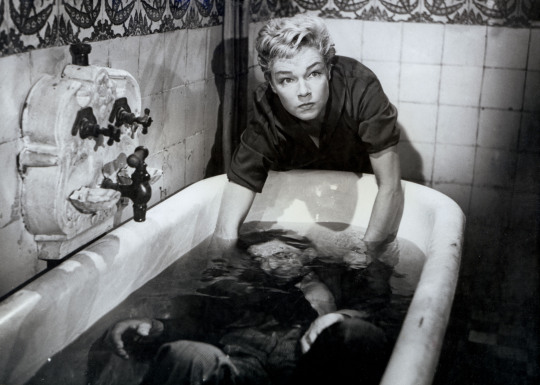
9. Les Diaboliques (Diabolique) (1955, France)
Directed by Henri-Georges Clouzot
“It was extremely suspenseful and you can see how this film had such a huge impact on Hitchcock when he made Psycho… Five out of five overly dramatic heart attacks.” —Libby Ajayi
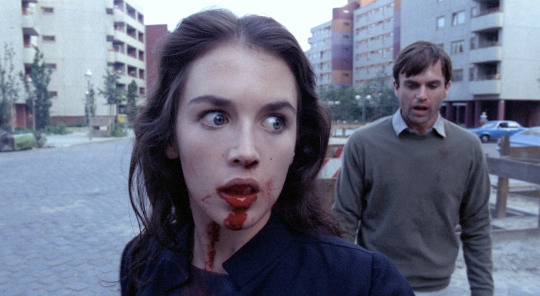
10. Possession (1981, Germany, France)
Directed by Andrzej Żuławski
“Ana’s spectral screams as she flows and dances like a ghoul in the subway. All I could do was cry at it, with her, for her.” —Claire Diane

11. 怪談 (Kwaidan) (1964, Japan)
Directed by Masaki Kobayashi
“Every frame of this movie is a piece of art… To ask for more would be greedy.” —Gabe
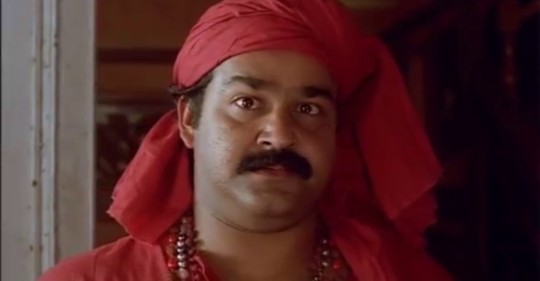
12. മണിച്ചിത്രത്താഴ് (Manichitrathazhu) (1993, India)
Directed by Fazil
“Perhaps the most popular film to come out of Kerala in this generation. The screenplay, the performance, and the plot are worth a study in [themselves]. Fantastic package of thrilling entertainment and storytelling.” —Vinay Warrier
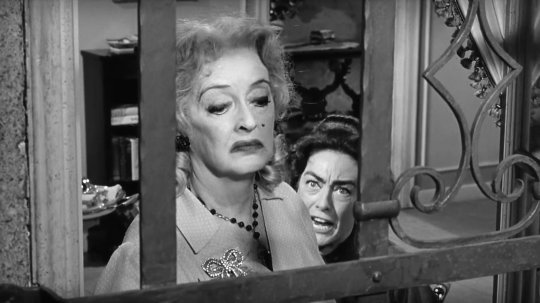
13. Whatever Happened to Baby Jane? (1962, USA)
Directed by Robert Aldrich
“Normally my heart really aches for ‘crazy’ characters who have been brutalized by the concept of womanhood but… it’s very hard for me to feel bad for Baby Jane.” —Caroline
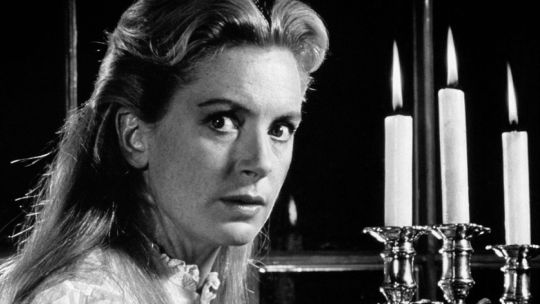
14. The Innocents (1961, UK)
Directed by Jack Clayton
“Exquisite and captivating… it’s the only movie I’ve watched this Hooptober that has genuinely scared me. Squirming, nail biting, chills down the back, all of it.” —Xebeche
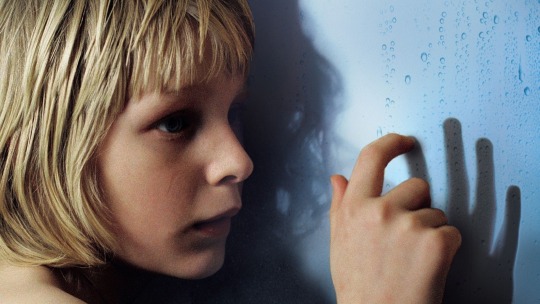
15. Låt den rätte komma in (Let the Right One In) (2008, Sweden)
Directed by Tomas Alfredson
“Deep down, it’s just a story about human misunderstanding, but it is gracefully put together to give you a thrilling ride that will make you root for an evil you’re not really sure is there. It makes you question your moral standards and puts you in a nice grey area.” —Charlie Bluu

16. カメラを止めるな! (One Cut of the Dead) (2017, Japan)
Directed by Shin'ichirô Ueda
“The film starts as a Z-list zombie movie and looks cheesy as hell, but when we discover we are watching more of a mockumentary of this film being made and the director on the verge of a breakdown, the fun really begins. The first 37 minutes are completely one cut… one cut, that actually blows my mind.” —Coles84
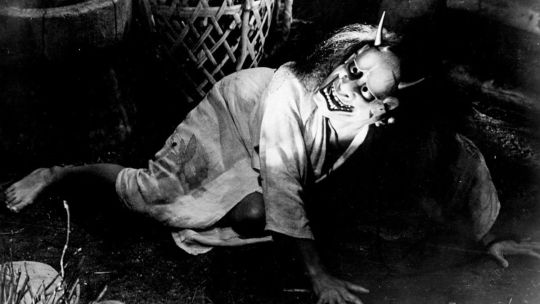
17. 鬼婆 (Onibaba) (1964, Japan)
Directed by Kaneto Shindō
“In good ol’ black and white, Onibaba is a visually stunning erotic horror film painted in deep shadows and flesh… it’s less a ghost or monster tale and more of a morality play about the passions and desperation that arise in splintered, war-torn communities, and how no matter what we fear, we are ultimately our own demons. Creepy, sensual and effective.” —Doug Bellak
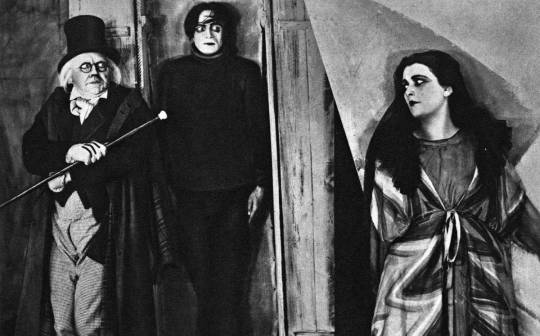
18. Das Cabinet des Dr. Caligari (The Cabinet of Dr. Caligari) (1920, Germany)
Directed by Robert Wiene
“From Murnau’s Nosferatu and the American noir of the 1940s, to contemporary horror films and every piece of work where Tim Burton asks Johnny Depp to dab black around the actor’s eyes, the influence of Wiene’s film can be felt… it is the stuff of nightmares that still has power nearly a century after it was made.” —Travis Lytle
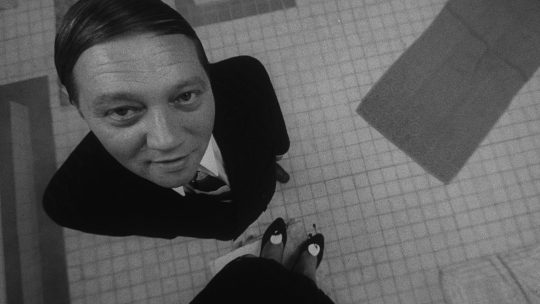
19. Spalovač mrtvol (The Cremator) (1968, Czechia)
Directed by Juraj Herz
“I find it hard to fathom a film as stylish and mesmerizing as this is, 45 years old! It was obviously way ahead of its time! The cinematography is as captivating as the film is deliciously macabre!” —Juli Norwood

20. The Exorcist (1973, USA)
Directed by William Friedkin
“The Exorcist remains one of the greatest achievements of the horror genre. The things they were able to accomplish with sound mixing at the time have yet to be outdone. The makeup department deserves a heap of credit, and the effects still look great. Acting is something that typically gets sacrificed in most horror movies, but this is one exception where every actor delivers a quality performance.” —Sean

21. Körkarlen (The Phantom Carriage) (1921, Sweden)
Directed by Victor Sjöström
“It was not for nothing that Selma Lagerlöf became the first woman to get the Nobel Prize. She’s a great storyteller, and there’s a melody in her writings that is hard to not get sucked into… Victor Sjöström has really understood the tone of the novel and the music that comes with it is in tune with the melody of Lagerlöf's writings.” —Terése Flynn

22. Faust – Eine deutsche Volkssage (Faust) (1926, Germany)
Directed by F. W. Murnau
“I watch this, and cannot fathom how this one man could make the cinematic medium look so relentlessly groundbreaking in its mere infancy. It’s obscene that he died so young… in a sense, Faust’s quest for the ur-truth becomes Murnau’s own quest for his own epic cinema: one that maximizes the potential for awe at every turn, leaving behind mundane methods for totalizing ones.” —Darkness Lingers
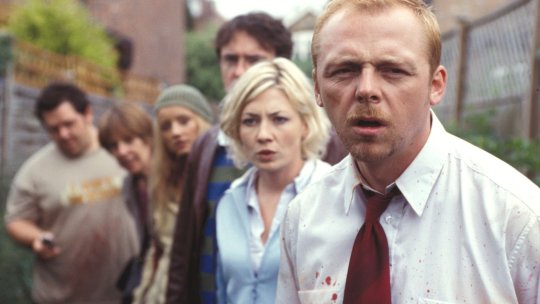
23. Shaun of the Dead (2004, UK)
Directed by Edgar Wright
“I understand tossing Batman when your other options are [Prince’s] two biggest contributions to the world of music, but it still saddens me that Shaun and Ed so carelessly tossed away a truly undervalued record. Perhaps, we all do crazy things when we’re trying to survive.” —Willow Maclay
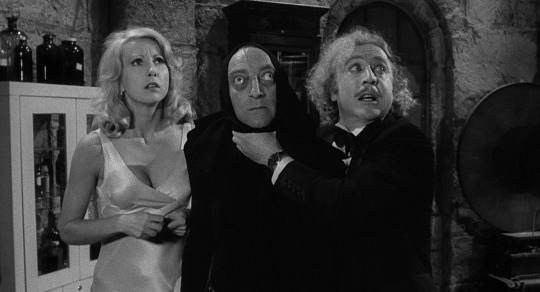
24. Young Frankenstein (1974, USA)
Directed by Mel Brooks
“When Mel hits, he hits big… [he] may not employ nuance often, but he’s got broad comedy and wordplay down pat, and some of his best examples of this are in Young Frankenstein.” —Joe Campbell
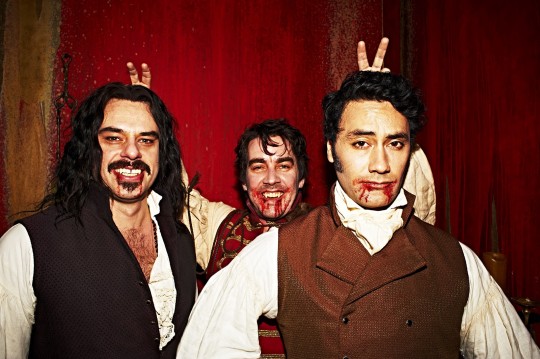
25. What We Do in the Shadows (2014, New Zealand)
Directed by Jemaine Clement and Taika Waititi
“An absolute must-watch for fans of horror comedy, horror, vampires, brilliant comedy in general, and great improvization. According to their IMDb trivia, Taika Waititi, Jemaine Clement and co. shot over 125 hours of improv for this film before finally whittling it down to 90 minutes of the best stuff.” —Voidember
Right. Now that that’s all done with, we are ready to go into town and party.
#highest rated#horror#horror films#25 highest rated horror films#psycho#alien#what we do in the shadows#alfred hitchcock#letterboxd#best of
67 notes
·
View notes
Photo

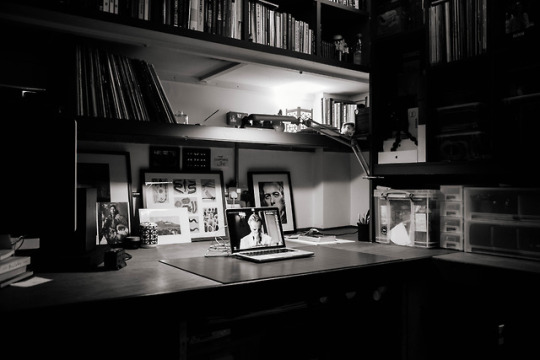
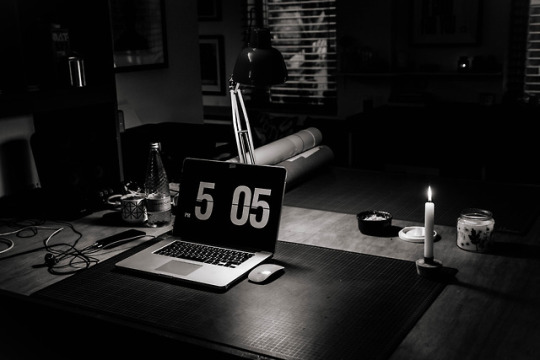
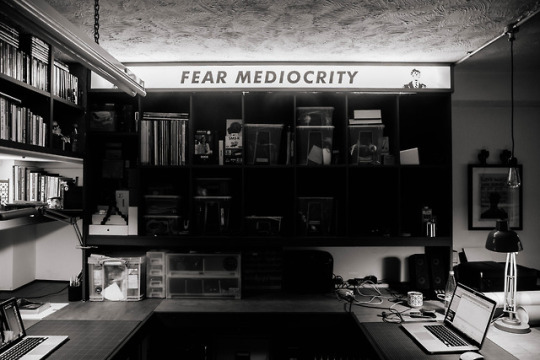

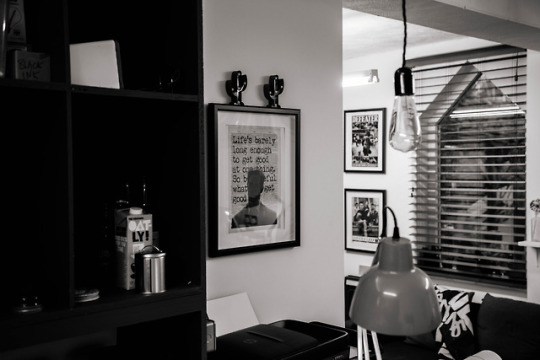

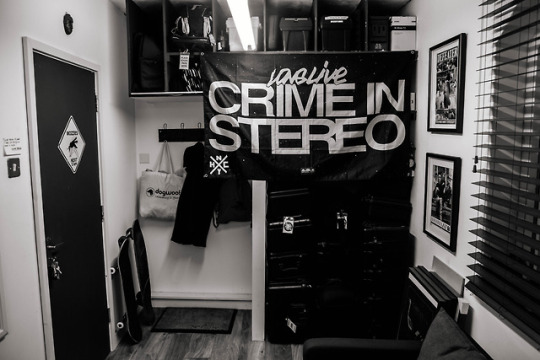
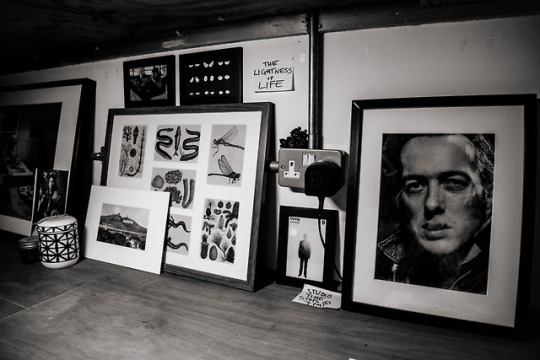

Death Studios: My studio space.
For a long time I’ve wanted to do a blogpost about my studio but it’s never materialised (mostly due to always being distracted by other more pressing matters in the world of work). That is until now.
Death Studios began life in September 2016 when I came back from working on the All Fucked Up video for The Amity Affliction. From time to time a mutual friend of mine worked from a coffee shop I often frequented, and she turned up one day and said that off the back of brexit she felt a need to find “a new place to work from to change things up”. Immediately I got on board with the idea as I’d never found the perfect spot to set up a studio before. Previously I’d been accepted at a number of innovation centres but the problem was that they were often far too ‘office like’ for me. I probably could have moved into a studio space about 5 years ago but I’m someone that operates strongly off the back of their gut feelings. Nothing every felt right for me until I walked into this place.
The entire building was up for grabs and 3 of us ended up coming together with the same goal. The other 2 people were more ‘desk based’ (a graphic designer and an illustrator) and therefore they needed a lot less space than me, so they ended up taking the floor above and turned it into a shared desk studio. But I needed shelf spaces, work tops, storage areas and a host of other features, so this room had massive potential. There were a few structural changes required that included an overhaul of electrics, the recovering of all surface woodwork, new windows with an advanced security system, a couple stud walls, a new wooden floor and finally the painting of the entire place. My dad was a huge part of the work that went into this place and he came up with the idea to drop the strip lights from the ceiling and hang them by chains (which I loved so much). There were a lot of late nights spent working on the space as well as continuing to run other video/film projects. I have fond memories of my brother and me painting the walls and laughing until I sides hurt at old stories of us growing up. Originally I had wanted to keep things minimal but I soon realised this was near impossible with everything I had. I actually suffer with OCD, so once I’d made peace with the layout I began arranging things as I saw fit. A large part of inspiration for the room came from Casey Neistat’s studio (his youtube blog linked below but click his name for a studio tour) and various other interiors outlets like Rocket St George (some bulbs and the coat rack near the front door are from that store).
The main aim for the studio space was for me to have a private working environment where I could do a number of things. The layout is setup for meetings, post-production work, pre-production work, team sessions, equipment storage/maintenance and physical product distribution. I actually want to create and release things that all get made and distributed from the studio at some point but I’ve yet to do this (it’s in the works though). The layout of the work surfaces means I can move to different points of the room depending on my mood. It sounds kinda crazy but my mood really does affect this and I’ve used pretty much all the different positions for different pieces of work. During the winter I often like to sit in the position picture 3 showcases. Picture 2 is often utilised for packing cases and the layout of the room means I can pretty much pack for any job within a 30 minute period. I have a large wall (not pictured) behind where picture 4 is taken but this is covered in post-it notes relating to the projects I’ve currently got going on so I can’t show it due to privacy requirements/NDAs I’ve signed. Originally the wall was covered with framed posters from various releases I’ve directed, but I felt like it wasn’t being used properly so these were taken down in favour of a wall where I could stick post it notes (this was partly inspired by the character Nathan in Ex-Machina, and the scene where we see a wall of post-it notes behind his work computer). There are a couple angles of the room I’ve not included due to me wanting to keep the location largely hidden, but there is also a tea and coffee area which has a picture of the Defeater boys hanging over it haha (thanks to my friend Josie Hoffman for that gift). The space can house about 4 people when working from computers but I’ve held a production meeting for a film here with about 12 people present.
The strip light you see above the shelves in picture 4 has a strange tale behind it. My parents bought an old derelict newspaper shop to setup their business in and during the renovations they found an old light that sat on top of a cigarette counter. The light sat in the loft of their business for years and as we approached the completion of the studio build my dad said “do you want that old cigarette counter light in here?” and I said “hell yes I do”. My plan was to have it on the floor previously and replace the old branded perspex front with my own custom one. I ended up going with a phrase that has stuck with me for years which is ‘fear mediocrity’. Mediocrity is of the the biggest threats to inspired and original art. Mediocrity is also a very big seller and it functions as the facilitating ground for many people looking to make money from creativity (it’s easy to accept and often doesn’t challenge the status quo). This is something I’ve always felt has to be avoided to achieve greatness in your work; so what better place to illuminate it than above my head every day. Either side of the phrase are a couple of aliens from the John Carpenter film ‘They Live’ who in the story are trying to capture and brainwash the earth. The strangest part of this light was that when we came to the installation it went perfectly into the gap above the shelf... there was no space either side of it to shift. It was a spooky moment because it honestly felt like that light was meant to be in that spot. If you look closely at the picture of it you’ll see a steel conduit right next to it with no space... this was fitted before the light went in, let alone was in the same building.
The studio has become an integral part of my work routine and allows me to disconnect from whatever I need to and concentrate on the job at hand. This place was at the centre of all of the projects I’ve helmed over the last 2.5 years. Due to the nature of how I work and the routine I have I unfortunately can’t accept work experience placements, but Crashburn does accept them on shoots. My creative routine has become extremely private since moving into this space and I realised that I want to keep it that way moving forward into future projects. I’m currently writing my first feature film (off the back of a recently produced short) which is bringing new challenges but never the less is being aided by this custom made space. I really recommend people in the creative industries finding their own studio space and making it truly ‘them’. It’s a tall order to find a spot you feel comfortable in but ultimately if you don’t feel good your workflow will be heavily disrupted. My advice to would-be studio designers is.... don’t rush. Find what works and make it yours. That is the very crux of what Death Studios is for me. I think the most gratifying thing about owning a spot like this is that it has come from a place within myself. In filmmaking you’re often surrounded by many different types of people and eventually you end up realising that everyone is different and everyone has their own idea of what filmmaking is. The journey is never the same twice. I’ve always wanted to be independent and able to do whatever I want, however I want, and finally this studio is a step in that direction (just think along the lines of Neil Blomkamp’s ‘Oats Studios’). I’m here to create the films I feel need to be made while developing myself further as a feature film director. In this process there’s a wonderful gap to facilitate anyone who wants to collaborate and make great things. The process is natural, nurturing and it makes me feel strong. All parts fit together. Long live Death Studios.
Rx
Links!
Casey Neistat Youtube Page
Casey Neistat Studio tour via Marcus Brownlee
Rocket St George
Ex-Machina ‘Post-it note’ scene
They Live movie
1 note
·
View note
Text
We unearth little-known tidbits of information about the King of Pop Michael Jackson’s life, on what would have been his 60th birthday
This slideshow requires JavaScript.
1. He was born in Gary, Indiana. He remains the city’s most famous resident, with Gary never recovering from the loss of its factory industry in the 1960s. That said, it’s also home to Jesse Powell, Kym Mazelle and Sista Monica Parker.
2. His parents had musical ambitions of their own. Mother Katherine Jackson played the clarinet and piano, and aspired to be a country and western singer. Father Joe was a guitarist and made extra cash performing in local R’n’B bands.
3. His first public performance was in 1963. When he was 5 he sang Shirley Bassey’s Climb Ev’ry Mountain at a public event organized by Garnett Elementary School’s Kindergarten.
4. His father was the first to notice the talent in his children. He would invite music executives to the family home, where The Jacksons would audition in the living room.
5. James Brown was his major inspiration. The late Godfather of Soul inspired Jackson to hit the stage. Speaking at his public funeral in 2007, Jackson recalled how, “Ever since I was a small child, no more than like 6 years old, my mother would wake me no matter what time it was, if I was sleeping, no matter what I was doing, to watch the television to see the master at work.”
6. He made his recording debut at 9 years old. It was on Big Boy by The Jackson 5, which was released by a small label in January 1968. It didn’t sell in large numbers, but it was enough to notify the major labels that these kids had talent.
7. His love for books began as a young teen. His early favorites were Rip Van Winkle by Washington Irving and The Old Man and the Sea by Ernest Hemingway. He reportedly amassed a library of more than 10,000 books.
8. His relationship with his sister La Toya was based on their love of practical jokes. His favorite was tormenting her with fake spiders and tarantulas. He would place a suspect creature on the phone in La Toya’s bedroom and would then call her and wait for her scream.
9. He began touring as an 8-year-old. As part of the first run of shows in America’s Midwest, The Jackson 5 supported soul legends Etta James, Gladys Knight and Sam & Dave.
10. He was never particularly fond of his voice during early recordings with The Jackson 5. Despite the acclaim, he would often lament the high pitch of his voice in later interviews, describing it as similar to that of Minnie Mouse.
11. It could have been The Jackson 6. Nearly 18 months before he was born, his mother gave birth to a set of twins, Marlon and Brandon. As a result of a severely premature pregnancy, Marlon survived but Brandon passed away 24 hours later.
12. Berry Gordy initially wasn’t a fan of Michael and his brothers. The star-maker and head of Motown Records dismissed the idea of signing them to his label, preferring to focus on Stevie Wonder. But he was eventually convinced to give them a shot and he signed them up in 1969.
13. You may not know her name, but Suzanne de Passe had a big role in his artistic development. She was assigned as a mentor and stylist to The Jackson 5 after they joined Motown. That relationship extended to Michael’s solo career, and she was the first one to see him rehearse the iconic dance The Moonwalk in 1983.
14. The Jackson 5’s global hit I Want You Back in 1969, was originally written for Gladys Knight and The Pips and Diana Ross. What’s unusual about the song is that the lovelorn lyrics are sung by Michael, who was barely in his teens at the time.
15. ABC is the first of Jackson’s songs that 50 Cent recalls hearing. Speaking to NME in 2015, the rapper said the track was responsible for him becoming a fan. “I’ve always loved MJ, so I guess it was probably a good place to start music: right here, with the ABCs.”
16. He broke barriers from a young age. When he was a 12-year-old with The Jackson 5, the group became the first black male group to release four back-to-back chart-toppers with 1969’s I Want You Back and 1970’s ABC, The Love You Save and I’ll Be There.
17. There was solo life before Off the Wall. For many, Michael arrived with 1979’s Off the Wall, but he released his debut solo album, Got to Be There, in 1972. It was a solid collection of soul and pop, with covers of Leon Ware’s I Wanna Be Where You Are and Bill Withers’s Ain’t no Sunshine.
18. He won his first and only Golden Globe in 1972. For Ben, a song he wrote for the 1972 horror film of the same name.
19. He always had his ear to the clubs. Jackson was a frequent visitor to the legendary New York City club Studio 54, where he was exposed to beat-boxing, which was an early harbinger to the upcoming hip-hop movement. He went on to incorporate the vocal technique into many of his future songs.
20. His first venture into film was The Wiz. He starred as a scarecrow in the title role of The Wiz, an adaptation of The Wizard of Oz. The film was horrible, but it was here he struck up a life-changing partnership with Quincy Jones, who went on to produce his biggest albums.
21. Quincy Jones nicknamed him “Smelly”. This was during their time on The Wiz. “I used to call Michael ‘Smelly’, because he wouldn’t say ‘funky’. He’d say ‘smelly jelly’.”
22. He broke his nose in 1979 during dance practice. He then consulted Hollywood favorite Dr Steven Hoefflin who reportedly performed Jackson’s first rhinoplasty.
23. He only worked with the best. In addition to enlisting Jones to produce the 1979 blockbuster album Off the Wall, the songwriters who helped him on the record included none other than Paul McCartney and Stevie Wonder.
24. Unlike many of his peers, Jackson hated singing from a sheet. While recording Off the Wall, he spent the evenings learning lyrics and harmonies, and would arrive at the studio the next day singing them off by heart.
25. Prince visited him during the Off the Wall sessions. Speaking to The National, Quincy Jones recalled how Prince arrived “into the studio like a deer in the headlight – clothes and shirt off – but he was always competing with Michael”.
26. He was the only musical mind behind one of his biggest hits. Off the Wall was full of songwriting collaborations, but Jackson was solely responsible for one of its biggest tracks, Don’t Stop ’Til You Get Enough. He decided to write the song after constantly humming the melody at home.
27. The change on 1979 single Rock with You. It was originally called I Want to Eat You Up, but that was deemed too risque for Jackson’s heartthrob image.
28. Off the Wall was almost a hit for Karen Carpenter. The hit title track from Off the Wall was originally written for the late Karen Carpenter’s debut solo album. She declined to use it and Jackson made it a top 10 hit instead.
29. The tears in She’s Out of My Life are real. Jackson would break down in tears at the end of each studio take. “We recorded about – I don’t know – 8 to 11 takes, and every one at the end, he just cried,” producer Quincy Jones said. “I said, ‘Hey – that’s supposed to be, leave it on there.’”
30. Jackson surrounded himself with talent in both the studio and the boardroom. With Off the Wall he secured the game-changing royalty rate of 37 cents wholesale per sale. It went on to sell more than 20 million copies.
31. Thriller was a blockbuster fueled by frustration. Despite big sales and critical acclaim, he was irked that Off The Wall didn’t win the Grammy Award for Record of the Year. “It was totally unfair that it didn’t get Record of the Year and it can never happen again,” he told manager John Branca. Thriller went on to win a record-breaking eight Grammys in 1984.
32. Billie Jean doesn’t exist. Despite being the subject of one of his biggest hits, the woman – who in the 1983 song admits she is carrying Jackson’s unborn son – is pure fiction. “The girl in the song is a composite of people my brothers have been plagued with over the years,” Jackson wrote in his memoir Moonwalker.
33. Billie Jean was the first video by an African-American artist to air on MTV. The video revealed Jackson’s new look of a leather suit, pink shirt, red bow tie and his signature single white glove. It was a style copied by kids throughout the United States. It caused one school, New Jersey’s Bound Brook High, to ban students from coming to class wearing white gloves.
34. Jackson introduced his famous Moonwalk in 1983. It was during a live performance of Billie Jean for the Motown 25: Yesterday, Today, Forever concert special. He was taught the move by veteran dancer Jeffrey Daniel, who went on to be hired as Jackson’s co-choreographer.
35. Jackson was a music investor from 1983. He bought the rights to select music from funk pioneers Sly and the Family Stone, and the iconic Dion DiMucci songs The Wanderer and Run Around Sue, before landing the rights to the 4,000 song catalogue of ATV Music Publishing, which included the lion’s share of The Beatles’ songs.
36. Jackson’s Beat It was a fiery single … literally. When Eddie Van Halen recorded his blistering solo, the sound of his guitar caused one of the studio speakers to catch fire.
37. The gritty music video for Beat It was a landmark production. The lavish production cost US$100,000 (Dh367,250) at the time. It was set in Los Angeles’ Skid Row and featured up to 80 real-life gang members from the notorious street gangs the Crips and the Bloods.
38. Toto were heavily involved in the making of Thriller. Keyboardist Steve Porcaro co-wrote Human Nature, and Steve Lukather contributed rhythm guitar on Beat It.
39. Thriller was almost Star Light. The lyric “thriller” in the track of the same name was originally “star light”. The decision to change it was down to marketing appeal.
40. PYT (Pretty Young Thing) was never performed live by Jackson. Despite being a well-received single from the Thriller album, the star never featured the song in any of his live sets.
41. Thriller was included in the Library of Congress’ National Recording Registry. The music video for the title track was also placed in the National Film Preservation Board’s National Film Registry of “culturally, historically or aesthetically significant films”.
42. It was with his seventh album, 1987’s Bad that Jackson really came into his own as a songwriter. He wrote nine of the 11 tracks and co-produced the album with Quincy Jones.
43. The title track for the Bad album was supposed to be a duet with Prince. But the latter walked away from it due to the opening line “Your butt is mine”. “Now, who is going to sing that to whom? Cause [he] sure ain’t singing that to me, and I sure ain’t singing it to [him],” Prince said in a TV interview with American comedian Chris Rock.
44. The smooth 1987 ballad I Just Can’t Stop Loving You is a duet with singer Siedah Garrett. She was the third choice after Barbra Streisand and Whitney Houston rejected the offer.
45. The Way You Make Me Feel was his mother’s request. Jackson wrote this track after his mum asked him to write something with a “shuffling kind of rhythm”.
46. Man in the Mirror is one of the few music videos he is hardly in. Other than appearing at the end standing in a crowd, the video is a montage of major events and historical figures.
47. His Superbowl XXVII half-time show in 1993 was game-changing. His pyrotechnics-laced four-song set was watched more than the game itself. It has set the standard for half-time shows ever since.
48. Michael Jackson’s 1991 album Dangerous was hot property. Five days before its release, three armed men broke into a music warehouse in Los Angeles and stole 30,000 copies.
49. The explosive video for Black or White was directed by Hollywood stalwart John Landis. It starred an 11-year-old Macaulay Culkin fresh from his starring role in Home Alone.
50. The music video to Scream was, at the time, in 1995, the most expensive ever produced. It had a US$7m budget. The menacing and arty video starred Jackson and his sister Janet.
51. Even when he wasn’t trying, Michael Jackson broke records. His album Blood on the Dance Floor: HIStory in the Mix, released in 1997, remains the bestselling remix album of all time, with more than six million copies sold, after virtually no promotion.
52. Jackson consistently mixed music with charity work. He was behind a series of Michael and Friends concerts in Germany and Korea, which featured performers such as tenors Luciano Pavarotti and Andrea Bocelli, as well as rockers Slash and The Scorpions. The money raised went to the non-profit organization War Child.
53. Jackson’s final studio album Invincible was the bestselling album of 2001, despite moderate reviews. It features the song Unbreakable, which had, until then, the unreleased vocals by slain rapper The Notorious BIG.
54. After years of scandals and court cases, Jackson re-emerged on the music stage by announcing his final live tour This Is It. The first 10 shows alone, to be held at London’s O2 Arena in the summer of 2009, would have netted him £50m (Dh236.49m). The residency was extended to 50 shows, but the tour was cancelled following his death on June 25, 2009.
55. This Is It was his first posthumous release. With the This Is It tour abandoned after Jackson’s death, the tour’s title track became the first of many posthumous releases. The song was originally written in the 1980s by Paul Anka.
56. The secrecy of Xscape. Michael Jackson’s second posthumous album, released on May 13, 2014, was such a big deal that journalists were invited to secret listening sessions around the world days before its release. The session for this region was held at Dubai’s now-closed Qbara restaurant.
57. The life and times of Michael Jackson were discussed in detail at the inaugural Dubai Music Week in 2013. It featured a sold-out special panel session on Jackson’s career featuring producer Quincy Jones and other collaborators, the late Rod Temperton (via live video feed) and singer Siedah Garrett.
58. Abu Dhabi and China were discussed as possible sites for the world’s first Jackson family-themed hotel called Jermajesty. Speaking exclusively to The National in 2013, Jermaine Jackson said he was looking at Yas Island as a possible site for the hotel, which would be filled with Jackson family memorabilia. Nothing has been built as yet.
Read also: Jermaine says Michael Jackson was on the verge of converting to Islam
59. To celebrate Michael Jackson’s 60th birthday today (August 29), a large street party was held in New York City last Saturday to celebrate his life. It was organized by the director, and his collaborator, Spike Lee.
60. It is only fitting that the Apollo Theater in New York is hosting its legendary Amateur Night today. It was on the same stage that, in 1967, The Jackson 5 launched their career.
60 Things You May Not Have Known About Michael Jackson
2 notes
·
View notes
Text
Sweet Living Under The Stars In Germany
I’ve happily followed Laura Wolter on Instagram for years over at @oursweetliving because I adore her smart DIY ideas and her kind and friendly Insta Stories, and of course her eye for style and color. Laura works primarily with warm, earthly colors - terra cotta, green, creamy white, beige, and peach tones combined with tons of textured, natural materials like wool, ceramic, linen, rattan, sessel, wicker, and wood. Combining these colors and materials with her large potted plants, two fluffy cats, and her boyfriend Victor - her house feels like a very loving and caring space.

I’ve met Laura in person a few times at the Garden + Home Blog Awards each year, she is as open and warm as you’d imagine, which is directly reflected in her interior world. It’s wonderful to see such a wide-eyed enthusiastic person enter the digital space with a fresh approach to decor that doesn’t feel heavily sponsored, extremely “on trend”, or overly staged. Laura is the real deal, which is why I wanted to introduce you to her today and share a glimpse of her new attic apartment in the very charming city of Münster, located in western Germany nearby to the Dutch border.

On Laura’s Insta, I enjoy how expressive she is in her daily videos (Insta Stories) and how much she shares with her followers, from her morning coffee to her frequent trips to IKEA and garden shops. I’m most impressed by her overall excitement for mundane home projects - she is motivated to get to work on things that most people whine and procrastinate about like laying a deck floor, adding molding to walls, and having to repaint because the color wasn’t quite right the first time around. Laura and her boyfriend Victor jump right in with contagious laughter and lots of smiles and kisses. Laura’s approach to everything she does is centered around staying positive, making small moments count, and doing everything with a complete heart.
Laura’s interiors are very tidy and well-edited. Together, they share a 140m2 space spread across two floors in the attic with a generous outdoor terrace, but even a large city apartment like this could easily become too full - yet she takes the lead in keeping it simple and relatively minimal. It can often be a challenge to share a space with pets, which I asked her about. She confessed to never being a “cat type”, but her two cats, Yoko Ono and John Lennon, moved in with her on a whim and now she can't imagine living without them. She expressed that it’s, “incredibly nice to come home to them” (especially when she lived alone in her former apartment), that, “they greet me at the door and they love to cuddle up in bed in the evening… They’ve been there for me throughout many difficult situations and have helped me with their cuteness.” :)

Her words made me think back to my childhood when I grew up with dogs and cats at home. Pets can certainly make a home feel so much warmer and loving, don’t you think?

One of the projects that I love the most from Laura and Viktor is shown below - how they changed their walls to look and feel more charming through the use of panel molding. Panel molding is raised wood trim used to accentuate flat walls to add character and mostly run the full height of the wall but many people are doing it 1/2 or 3/4 up the wall now to mimic wainscoting. Panel molding (and wainscoting) is a real trend for interiors, especially used in neutral, relatively minimalist spaces, in cream or white, in spaces where this type of paneling was not included originally. Laura appreciates the charm of her old building which is why they decided to apply this idea to their living room, dining room, and hallway - because it creates even more charm in the apartment. I have to agree - you can see the BEFORE and AFTER in both her hallway and dining room below. Gorgeous!

BEFORE - Adding wood molding and paint to their hallway

After!

BEFORE - Happy to get started!

Adding paneling to wall, and paint, and still HAPPY!

AFTER - and next they will add a cabinet to the wall… IN PROCESS….
This talented couple is currently working behind the scenes to build an online store for home decor - OUR SWEET LIVING SHOP. They’ve teamed up to design and make everything themselves because their backgrounds and talents match perfectly - she studied fashion with a major in tailoring, design, and management, so she is responsible for the textiles and Victor is a carpenter so he handles the building and woodwork. After her fashion management studies, she also studied communication science in Münster. Victor is from Chile and relocated to Germany six years ago and like Laura, he has a great passion for traveling, getting to know other cultures, and meeting different people. He did his training as a carpenter here in Germany and has been working in this field ever since, so they are a great match. Laura calls him her lucky charm because since he came into her life, so many beautiful things have happened to her. Their biggest dream is to someday buy an old apartment and refurbish and renovate everything together. It’s so inspiring to watch this young couple organically build their interiors world together now with their new apartment, next with their online shop, and later - well, let’s wait and see!


Lovely plants!

And more plants!
0 notes
Text
Berlinale Film Festival 2021, Industry Event, Day 2
One of the great treats of going to a film festival is getting the chance to wake up and see some transgressive mindfuckery first thing in the morning. This can be either thrilling, like seeing ANTICHRIST at 10:00 AM in Toronto and then being excited to see if the rest of the day’s movies can top that; or it can knock you out for the rest of the day, like seeing IRRADIATED at last year’s Berlinale and needing to process my contempt and hope for humanity.
Of course, part of the thrill of these experiences has been sitting with an audience and going through the mindfuckery as a collective, feeling the energy, seeing people walk out, getting through it together. When things are moved online, and the timing and schedule of your streaming film festival is more or less up to you, many pleasures are lost. But I have to say, there was a thrill in getting up at sunrise to put on some headphones and sit with THE SCARY OF SIXTY-FIRST, an effectively wild and perverse shriek of a movie from first-time director Dasha Nekrasova, and part of this year’s Encounters section.
Shot in New York City, on beautiful 16mm film, THE SCARY is a steep plummet down the conspiracy theory rabbit hole, triggered by the death of Jeffrey Epstein and two roommates moving into a new apartment on 61st Street that may be linked to the man and the sex trafficking ring he was involved with. These details are merely the place setting for an aggressive and sometimes messy assault on good taste and mainstream cinematic conventions. The two roommates descend into different kinds of madness — Addie seems to be possessed by some sort of evil within the apartment, while Noelle is quickly consumed by the conspiracy theories circling Epstein, the royal family, pizzagate, etc. Wedged between the two is Nekrasova herself, playing an amateur sleuth who indoctrinates Noelle with lurid websites, pharmaceutical speed, and sex. From there, the rabbit hole just keeps getting wider and weirder, Addie becomes obsessed with Prince Andrew and creepy tarot cards keep popping up. There will be blood.
I found it all pretty damn intoxicating, but I can understand that others will be put off by its shrillness and lack of subtlety. While the movie is dedicated to Stanley Kubrick, and it gets some inspiration from EYES WIDE SHUT, it’s more along the lines of John Waters crossed with John Carpenter. If you hated FEMALE TROUBLE, you may want to stay away from THE SCARY OF SIXTY-FIRST. Otherwise, this movie sits comfortably next to the kind of outre indie horror movies that got passed from VCR to VCR in the late 80s and early 90s. But what really makes THE SCARY kick, is how directly it speaks to the age of QAnon, the equal parts seduction and repulsion of violence, and the horror that comes from being trapped in a system you have no control over. My only complaint is that the film leans a little too heavily on old horror tropes right at the end, but this couldn’t take away the thrills it provided up to that point. I’m already looking forward to how Nekrasova might follow-up this one.
This year’s Golden Bear for best film went, deservedly, to Radu Jude’s BAD LUCK BANGING, OR LOONEY PORN. Another extremely transgressive film, this one takes a flamethrower to contemporary values in Romania and any other place where racism, sexism and authoritarian fetishism have taken root — meaning, it’s both very specific to Romania and quite universal.
The movie begins with a very graphic and absurdly funny home porno, being shot on a phone. Soon enough, we find out the woman in the video is Emi, a respected history teacher at a private school in Bucharest. The first act of the movie is Emi walking through Bucharest. The city is littered with signs of capitalism run amok, juxtaposed against fervent religiosity. Gambling and wholesomeness. Tastelessness and righteousness. The camera makes these connections with some choice camera panning maneuvers. These movements bring to mind Robert Altman’s style of movement — casual yet smart and impactful.
As Emi makes her way to her destination, the film’s regard for realism begins to deteriorate. Bit by bit, drivers begin showing less regard for the safety of pedestrians. Everyone is foul-mouthed and inconsiderate of others, even while wearing pandemic masks. If you can’t afford a car, who cares about you? It’s not that far from reality, but the pointed exaggerations start piling up and lead us into the mid-section of the film, where we’re treated to an A-Z montage of our most pressing issues and what’s wrong with the world. It both serves as a rundown of the topics that are going to present themselves in the final act of the movie, as well as more visual evidence of our corrupted values and moral decay. It’s a bitter and bleak hoot.
It’s all leading to a confrontation between Emi and her school’s parent-teacher board. It’s one of the most absurd, insulting and cuttingly insightful trials put on film. What are a teacher’s responsibilities outside the classroom? What if the teacher in this situation were a man? What if the teacher is also including lessons about Romanian history that today’s citizens would rather not deal with? All of this and much more is on the table for riotous discussion. More than once, someone cackles the Woody Woodpecker laugh when the debate really goes off the rails. While the visual language in the final act settles into a more conventional groove, the sound editing is something of a tour de force. It’s punchy, freewheeling, obscenely hilarious and brings the movie to an unbelievable final moment.
BAD LUCK is a hard act to follow. If I’d known how ambitious it was, I would have saved it for day’s final screening. But for better or worse, the next film was a very quiet, understated Competition title — this one from Hungary (which was well-represented this year), entitled NATURAL LIGHT. Written and directed by Nagy Dénes, this is a gorgeously shot war-is-hell movie that follows a weathered unit of Hungarian soldiers as they try to round up Russian partisans during WWII. Yes, the title of the movie perfectly describes the golden, autumnal hue of the movie, as it is primarily set in barren forests, small, sooty villages and fields with plenty of mud.
The film is based on a massive book by novelist Pál Závada, but Dénes made the interesting decision to just focus his movie on a few days in the life of István Semetka, who is forced to step up and take charge of his unit early on in the film. Aside from capturing the unrelenting force of their natural surroundings, cinematographer Tamás Dobos also does an amazing job of capturing people’s faces — not unlike the films of fellow countryman, Bela Tarr. Ferenc Szabó, who plays the beleaguered Semetka, has two of the most soulful eyes I’ve seen on screen lately. This is of critical importance since the film has very little dialog until a couple of well-written monologues at the end. Semetka’s eyes say it all.
As mournfully beautiful as it is, NATURAL LIGHT isn’t an easy movie to sit through. It’s quiet and heartbreaking. But this level of sorrow and atrocities is also very familiar to cinema. In a way, it’s unfair because this story, in its way, is unique. But the message of how indifferent war is to soldiers with good intentions, has been told before. Few movies, however, have told it in such a wordless and poetic way.
Throughout the history of film, there’s always been a struggle to turn good theater into cinematic art. When talkies began and TV took off, we turned to the wealth of good theater scripts that already existed as readymade source material that could meet the demand for content. Sometimes it works, and the scripts can be well-adapted into the cinematic language. Other times, it’s like we’re just looking at a filmed documentation of a theater piece, which relies heavily on the strength of the words and performance, and not on any tools of the filmic trade. Denis Côté’s new film does a neat job of adding a new wrinkle to this long tradition of finding ways to turn monologues and long chunks of dialog between two people into an engaging work of film.
Côté has always had a strong experimental streak to his work, and even though he wrote this script and titled it “Social Hygiene” in 2015, it would seem that the current pandemic gave him the final push to turn the unusual idea of long, socially distant conversations in a field into a movie. Aside from a few shots that follow a young woman as she walks through nature, says hi to some livestock and offers an intermission dance sequence, SOCIAL HYGIENE is a series of static shots, framing different sections of rolling Canadian countryside, and containing a couple of people talking to each other across a certain distance. The framing, the sounds, the tone and rhythms of the conversation, are all very stylized. And in its way, perfectly cinematic. Côté pays attention to the ambient noises during these scenes. Birds turn into a cackling audience, construction noises go quiet and resume at just the right moments — it’s all very well-orchestrated.
The story and conversations of SOCIAL HYGIENE have nothing to do with the pandemic. It’s the fairly universal story of a charismatic, smooth-talking guy of unmet potential, who is consistently disappointing the women in his life. This man is Antonin, and we first meet him as he bickers with his sister. While Antonin is married, he’s currently living in a friend’s car, getting by through small-time theft and avoiding plans that might improve his lot in life, like working on that screenplay he’s been kicking around. Both his wife and his mistress try to prod him in the right direction, but he’s such a charmer that he enjoys spinning his destitution as the life of a lovable rogue, who’s morals and values can’t be met by traditional means.
More than any other film seen, so far, from this year’s Berlinale lineup, SOCIAL HYGIENE had me laughing-out-loud the most. And I’m very willing to admit that this is likely due to how much I related to Antonin’s faulty reasoning. But it’s also due to the fact that the script is supremely sharp and its deadpan delivery brought to mind Hal Hartley’s films. Like Hartley, Côté is anti-realist in his staging and delivery, meticulous in his timing, and yet uses humor to get at some very fundamental human dilemmas. I love Hartley and miss his sensibility dearly. So, yes, I loved every minute of SOCIAL HYGIENE.
Even with a press pass, it can be a challenge to sit for every Competition screening. There are simply too many other films that call for your attention. But in this streaming scenario, I was committed to seeing every last one. I felt like I didn’t have any good excuse not to when you can make your own daily schedule. So, Xavier Beauvois’s ALBATROS (or DRIFT AWAY, as it may end up being called in your neck of the woods) got a late Tuesday night home screening. It didn’t go down well.
The only one of Beauvois’s previous films that I’m familiar with is 2005’s THE YOUNG LIEUTENANT, which follows a homicide detective in La Havre. ALBATROS follows a police chief in the much more idyllic region of Normandy. Jérémie Renier plays the cop, Laurent, and just as the movie starts, he’s just proposed to his girlfriend of ten years, with whom he already has a young daughter. In the next scene he’s cleaning up after a suicide on the beach, and then there’s news of child abuse by local resident, and his friend is at the end of his rope dealing with farming regulations. Things are piling up quickly, and the chipper Laurent is soon getting edgy and taking his work home with him.
The beginning of the movie isn’t bad. It’s clearly building to something and it can hold your interest while it does that. But when that shoe drops, the film goes off the rails and descends into a completely ridiculous and phony final act. It doesn’t help matters that Beauvois never really finds an interesting visual language with which to tell this story. From the get-go, his camera is just there, shooting scenes and conversations in a way that makes everything seem slightly off and unnatural. It feels like things are being staged, much as the wedding photo on the beach that gets interrupted by a death at the very beginning. Unfortunately it never shakes this feeling, and two hours later, you can’t believe that you’re watching an ending so clichéd that Hollywood would probably think twice before giving it a greenlight. It’s the kind of denouement that is so cheesy and unearned that instead of choking back tears, you feel completely cheated.
Aside from ALBATROS, Day Two was a rich abundance. The punk stylings of THE SCARY OF SIXTY-FIRST, the anarchic Molotov cocktail of BAD LUCK BANGING OR LOONEY PORN, the austere meditation of NATURAL LIGHT, the playful theatrics of SOCIAL HYGIENE — these all had something special to offer. Tomorrow, we’ll visit China, France, Georgia and, once again, Hungary, for two more films with big rewards and two that struggled to transcend their formal trappings.
0 notes
Text
Larry Cohen: 1941-2019
Since the creators of B-movies generally do not have such luxuries as famous actors, familiar properties and large budgets to work with, they have to rely more heavily on an ingredient that is just important but much lower in cost—a great idea. Not just any great idea, of course, but the kind of idea that makes you stop in your track and think “Man, I’ve gotta see that.” The problem is that, in many cases, even if they do manage to beat the odds and come up with that killer idea, they don’t always have the resources or talent to do it justice.
One B-filmmaker who never had that problem was Larry Cohen, who passed away this weekend at the age of 77. He may have never had the same level of name recognition as such contemporaries as George Romero or John Carpenter, but his films, in which he took often outrageous premises and built upon them with witty dialogue, incisive social commentary and colorful characters, were among the best genre films of their era and continue to pack a punch today.
Cohen was born on July 15, 1941 in Manhattan and from a young age, he developed a fascination with movies. In an interview I did with Cohen a couple of years ago, he professed a special fondness for the films produced by Warner Brothers during that era. “It was a great studio—they had really ballsy movies and political movies … They were shot at a fast pace with a lot of action and fast talk, as opposed to MGM movies, which were a lot slower and more luxurious. He began his career as a writer for television, first by writing for such shows as “The Defenders, “The Fugitive” and “Rat Patrol” and then by creating such shows as the 1965-’66 Western “Branded” (sorry fans of “The Big Lebowski”) and the 1967-’68 paranoid sci-fi saga “The Invaders.” Watching the shows that he created today, one can actually see the ideas and conceits that Cohen would embrace throughout his career—especially in the mixing of standard genre tropes with sly commentary about what is going on the real world, including the blacklist and the Red Scare—coming together in distinctive ways that set them apart from a lot of what was going on in television at that time.
He then began to make the move into writing feature films in 1966 with “Return of the Seven,” a largely forgettable sequel to the hit Western “The Magnificent Seven,” “I Deal in Danger” (1966), a spy film comprised of the first four episodes of another series he co-created, “Blue Light,” and the psycho artist horror film “Scream, Baby, Scream” (1969). Later in 1969, he would come up with what would prove the first great example of his kind of audacious storytelling that would eventually become associated with his name. In “Daddy’s Gone A-Hunting,” on which he cares a co-writing credit with Lorenzo Semple Jr., Cathy (Carol White) arrives from London to live in San Francisco and immediately meets and falls in love with the seemingly nice and clean-cut Kenneth (Scott Hylands). She soon becomes pregnant but then begins to discover that Kenneth is deeply disturbed and elects to not only break up with him but to have an abortion as well. Some time passes and Cathy has now married a rising politician and given birth to their child when Kenneth turns up again with a shocking demand—Cathy must kill her baby to even the scales for having aborted his child. Channeling real-world concerns into a thriller framework, this was a truly startling screenplay (one that almost certainly would not pass muster today) and if the execution did not quite do it justice—although the screenplay required a daring test pilot of a director to do it justice, Mark Robson, fresh off the success of “Valley of the Dolls,” was strictly United material—it certainly promised better things to come in the future.
"Bone"
Like so many screenwriters, Cohen tired of directors messing with his material and finally moved into the director’s chair in 1972 with the bizarre dark comedy, “Bone.” As the film begins, Beverly Hills couple Bernadette (Joyce Van Patten) and Bill (Andrew Duggan) interrupt their latest round of bickering when they discover a strange man (Yaphet Kotto) on their grounds and invite him in, assuming he is an exterminator. The man, Bone, isn’t and takes the two hostage but soon discovers that his captives are not as rich as they appear to be. Nevertheless, he sends Bill to the bank to get more money and threatens to do great harm to Bernadette if he doesn’t return. While in line, Bill gets distracted by a sexy young woman (Jeannie Berlin) and decides to abandon his wife. While all this is going on, Bernadette gets increasingly drunk, seduces her captor and launches a plan for them to murder Bill and collect his insurance money. Making the most of what were presumably limited resources, Cohen devised an ingenious work that tackled racial, sexual, and class concerns in a manner that pulled no punches and got great performances from his cast to boot. Although closer in tone to something like “Who’s Afraid of Virginia Wolff?” than anything else, the film ended up being sold more along the lines of a straightforward exploitation movie—one wonders what the typical grindhouse crowd must have thought when they encountered this instead of the usual junk that they were presumably expecting.
Cohen was then contacted by Sammy Davis Jr., who wanted to do a film where he was the central character for a change, and the idea of doing a contemporary version of the Warner Brothers gangster films of the Thirties came up. When Davis couldn’t pay for the script for “Black Caesar” (1973) due to tax trouble, Cohen ended up selling it to American-International Pictures and wound up directing the film as well with Fred “The Hammer” Williamson in the lead. Charting the rise and fall of Tommy Gibbs (Williamson), who begins as a kid struggling to survive on the streets of Harlem, becomes the head of the black crime syndicate and wages a war against his enemies that leads to his downfall, the film was fairly conventional in its structure, Cohen added any number of twists that are still startling to observe today—in perhaps the most infamous bit, the adult Tommy gets the drop on the racist cop who beat him as a child when he was doing shoeshines on the street, smears the guy’s face with shoe polish and forces him to sing before beating him to death with a shine box. These wild bits, coupled with Williamson’s undeniable screen charisma and a driving soundtrack by James Brown, helped make the film a hit and AIP clamored for a sequel despite the fact the central character had definitively died.
Needless to say, that didn’t stop Cohen and by the end of 1973, he had “Hell Up in Harlem” in theaters with Williamson again in the lead. Like most rushed sequels, this is a relatively undistinguished programmer but it does contain one magnificently inspired sequence in which Tommy chases an attacker through the streets of New York that seems to end when his quarry eludes him and boards a plane taking off for Los Angeles. That doesn’t stop Tommy—he boards the next flight to L.A., spends the next few hours flying out and lands just in time to finish things up at the baggage claim at LAX.
"It's Alive"
Not wanting to be pigeonholed solely as a blaxploitation filmmaker, Cohen made his shift to the horror genre where he would achieve his greatest fame. His first effort there, and one of his most famous films, was “It’s Alive” (1974), in which he took one of the squirmier premises in screen history—a woman gives birth to a monstrously deformed baby that slaughters anyone unlucky enough to cross its path—and embroidered upon it with a narrative that managed to make its so-called monster somehow sympathetic in the manner of Frankenstein’s Monster, presented some extremely pointed commentary regarding the pharmaceutical industry (who devised the pills the mother took that presumably caused the mutation and who need the child killed in order to cover up their culpability) and included moments of jet-black humor as well as well as impressive contributions from makeup maestro Rick Baker and famed composer Bernard Herrmann. Completed in 1974, the film was released by a regime at Warner Brothers that did not get it and thus the film only received a limited release. Three years later, the film was re-released with an inspired new ad campaign (“There is only one thing wrong with the Davis baby. It’s alive.”) and became a box-office hit that would inspired two Cohen-directed sequels, “It Lives Again” (1977) and “It’s Alive III: Island of the Alive” (1987) and a 2009 remake that was so bad that Cohen claimed that the head of the studio that made it actually apologized to him for it.
From this point, Cohen embarked on a series of wildly ambitious films (especially considering the low budgets that he was working on) that continued to join together familiar genre tropes with increasingly pointed social satire and commentary. In “God Told Me To” (1976), he tackled religion with a story of a New York cop (Tony Lo Bianco) trying to solve a rash of bizarre violent crimes perpetrated by people who claim that God told them to kill and stumbles upon a cult whose leader (Richard Lynch) inspires some startling revelations about his own past and possible connection to the increasingly bizarre happenings. “Q-The Winged Serpent” (1982) involves a giant flying serpent that is flying around decapitating New Yorkers and a small-time crook (Michael Moriarty) who happens to discover the beast’s hiding place and tries to trade that information to the police in exchange for a big payday. “The Stuff” (1985) was a broad satire target crass commercialism and corporate indifference in telling the tale of a brand new dessert treat, known as The Stuff, that sweeps the country and turns those who eat it into addicts. An industrial spy (Moriarty) hired by the now-struggling ice cream industry investigates and it turns out that the Stuff is a living parasitic organism that is essentially eating the very same people who are eating it—a minor fact that those selling the substance seem blithely unconcerned with in their quest for profits. In “The Ambulance” (1990), a comic book artist (Eric Roberts) investigates the disappearance of a woman he just met—after collapsing on the street, she was picked up by an ambulance but never made it to any hospital—and uncovers the expected mad and elaborate conspiracy.
Among genre movie fans, the films that I have just cited, with the possible exception of “The Ambulance,” are justly famous, not only for the films themselves (which expertly blend the comedy and horror genres with style and ease) but for the stories regarding their productions. In “God Told Me To,” there is a scene in which someone dressed as a policeman begins to shoot up New York’s St. Patricks’s Day parade. Considering the number of elements that would be occurring, there was no way that he could possibly get the required permits to film during the actual parade and recreating it would cost far too much money. Instead, he just took his actor—a then-unknown Andy Kaufman, just to add to the weirdness—and stuck him into the parade and filmed without any permits. As for “Q,” that film came about when Cohen was fired from another movie that he was directing, a big-budget adaptation of the pulp classic “I, the Jury” and decided to conceive another movie to do instead—not only did “Q” beat “I, the Jury” into theaters, it cost only a fraction of that film’s budget and wound up being a bigger hit to boot.
"Full Moon High"
Although these horror/satire hybrids would be the films that he would become most associated with, Cohen would occasionally change things up with unexpected forays into different types of filmmaking. “The Private Files of J. Edgar Hoover” (1977) was an ambitious biopic that centered on the 40-year career of the former FBI director (Broderick Crawford) but which also served as a corrosive look American history during that time. Although the budget limitations are a little more obvious this time around, the film hit more than it missed. “Full Moon High” (1981) was a sweet-natured comedy in which Adam Arkin plays a teenager in 1959 who is bitten by a werewolf while on a trip to Romania—rendered ageless by this attack in addition to the usual side effects, he returns to his old high school 20 years later to reenroll, this time posing as his son. Although it had the misfortune to come out in the midst of a mini-glut of werewolf movies (that included “The Howling,” “An American Werewolf in London” and “Wolfen”) and disappear from view, it remains a charming work that suggests what the later “Teen Wolf” might have been like if it was actually good.
Cohen then returned to his early thriller roots with two 1984 films that he shot back-to-back. In “Special Effects,” Eric Bogosian plays a filmmaker driven mad by a massive flop who accidentally films himself murdering a one-night stand (Zoe Lund). After discovering a lookalike (also Lund), he elects to make a movie about the dead woman utilizing that footage but when it gets destroyed, he becomes convinced that he needs to recreate it. In “Perfect Strangers,” a Mob hitman (Brad Rijin) discovers that a young, pre-verbal boy has seen him committing a murder and is ordered to kill the kid but before he can, he finds himself getting into a relationship with the boy’s mother (Anne Carlisle). “Wicked Stepmother” (1989) was another overt comedy but one perhaps better known for its own oddball behind-the-scenes story—after filming for a couple of weeks in the title role, star Bette Davis suddenly left the production and rather than shut everything down, Cohen rewrote things so that her character would suddenly change her appearance so that the rest of the part could now be played by Barbara Carrera.
Although it would become harder over time for Cohen the director to get work—especially since the studios were now specializing in expensive versions of the B-movies that he specialized in—he still found work as a screenwriter and his name turned up on the screenplays for such films as “Best Seller” (1987). “Maniac Cop” (1988), “Body Snatchers” (1993,” “Guilty as Sin” (1993), and “Cellular” (2004). Of his work as a pure screenwriter during that time, his best-known project is probably the 2003 hit “Phone Booth,” a thriller in which a fast-talking publicist (Colin Farrell) with a messy personal and professional life impulsively answers a call at the last phone booth in New York and finds himself targeted by an unseen sniper who threatens to kill him if he attempts to leave. Cohen originally pitched the basic idea for the film to no less than Alfred Hitchcock but it was abandoned when they could not conceive of why the guy would have to remain in the phone booth.
Cohen’s final film as a director was “Original Gangstas,” an entertaining blaxploitation revival that brought back some of the genre’s greatest icons—including Fred Williamson, Jim Brown, Ron O’Neal, Richard Roundtree and Pam Grier—to kick some young punk ass. However, while he wasn’t doing anything new, his legacy continued to flourish. A member of an informal club of genre filmmakers known as the Masters of Horror, he would go on to direct an episode of the horror anthology series by the same name in 2006. He had reportedly been working with JJ Abrams on a project anthology series for cable television.
"Q: The Winged Serpent"
His oeuvre returned to the spotlight in 2017 with the release of “King Cohen: The Wild World of Filmmaker Larry Cohen,” a wildly entertaining documentary in which Cohen looks back on his crazy career and which features additional testimonials from friends and coworkers as well as a slew of mouth-clips that will make you want to see the full features immediately. Among students of the genre, Cohen’s influence as a storyteller cannot be denied.
Of course, any discussion of the works of Larry Cohen at this site cannot conclude without mentioning an anecdote that Roger and others would often cite. In 1982, “Q” screened at that year’s Cannes Film Festival under the original title “The Winged Serpent.” As those who have seen the film know, the movie is largely dominated by a brilliantly out-of-left-field performance by Michael Moriarty, the kind that might have earned awards had it not been included in a film where giant creatures tear the heads off of topless sunbathers. Anyway, after the screening, there was a luncheon and the following conversation was said to have taken place between Samuel Z. Arkoff, the B-movie legend who produced “Q,” and film critic Rex “Myra Breckenridge” Reed.
REED: Sam! I just saw “The Winged Serpent!” What a surprise! All that dreck—and right in the middle of it, a great Method performance by Michael Moriarty!
ARKOFF: The dreck was my idea.
A great story, of course, but the genius of Cohen—and I do mean “genius”—was that he took concepts that others could have easily reduced to dreck and transformed them into witty, provocative works that pushed all the right buttons. As a filmmaker, Larry Cohen was a true master—not necessarily of horror alone. For film fans who have long sparked to his offbeat output, his passing will prove to be a great loss.
from All Content https://ift.tt/2HDYZvO
0 notes
Text
A Brief History of Chatbots

It may seem as though chatbots came out of nowhere - but really, they’ve been around for quite some time. Here is our history of chatbots (and all things AI) from 1950 to today...and then some.
1950: Turing Test
Alan Turing publishes Computing Machinery and Intelligence, introducing the concept of the Turing Test which tests a machines ability to exhibit behavior indistinguishable from that of a human.
1956: Dartmouth Conferences
The Dartmouth Summer Research Project on Artificial Intelligence is held, establishing AI as a field of study. Organized by Assistant Professor of Mathematics John McCarthy, the conferences lasted approximately 6 to 8 weeks.
1966: ELIZA
ELIZA, an early natural language processing computer program that simulated a Rogerian psychotherapist, is created at the MIT Artificial Intelligence Laboratory by Joseph Weizenbaum. It is said to be one of the first programs able to pass the Turing Test.
1972: PARRY
PARRY, a chatbot created to simulate a person with paranoid schizophrenia, was created in 1972 by psychiatrist Kenneth Colby. In the same year, PARRY and ELIZA “met” and “talked” to each other at the International Conference on Computer Communications in Washington D.C.
1980: Chinese Room
The Chinese Room argument is introduced in philosopher John Searle’s paper “Minds, Brains and Programs” published in Behavioral and Brain Sciences scientific journal. The argument poses a hypothetical scenario which implies that a computer has no consciousness, no matter how human-like it may behave.
1983: Racter
Racter (short for Raconteur), an AI computer program written by William Chamberlain and Thomas Etter, is revealed in a book called The Policeman’s Beard is Half Constructed. Racer is said to have to have authored the book, entirely.
1997: Jabberwacky
Jabberwacky is created by British programmer Rollo Carpenter as one of the earliest forms of human conversation based AI. Built mainly as a form of entertainment, Carpenter also intended it be capable of passing the Turing Test.
1992: Dr. Sbaitso
Dr. Sbaitso, an AI speech synthesis program for MS DOS-based PCs is released. Although the program attempted to resemble a real-life psychologist, the use of a digitized voice and its repetitive responses made it feel otherwise.
1995: A.L.I.C.E
Artifical Linguistic Internet Computer Entity, or A.L.I.C.E for short, comes to life. Heavily inspired by ELIZA, the natural language processing boy had the ability to engage in a conversation with a humans by applying heuristic pattern matching rules to the human’s input.
2001: HAL 9000 (2001: A Space Odyssey)
The year in which HAL 9000, a calm-voiced sentient computer that controls the Discovery One spaceship in the 1968 science fiction epic 2001: A Space Odyssey, decides to go haywire. “Im sorry Dave. I’m afraid I can’t do that” may ring an unnerving bell.
2001: SmarterChild
SmarterChild, the intelligent bot developed by ActiveBuddy, Inc. is released across popular instant messaging and SMS platforms. The robot sat on the AIM buddy list of millions of kids and adults across the globe until the technology was shelved following an acquisition of the company by Microsoft.
2001: GooglyMinotaur
GoogleMinotaur, an AOL Instant Messenger bot, was developed by ActiveBuddy to promote Radiohead’s fifth album, Amnesiac. It’s release marks one of the first instances of bots used for commercial means. After conversing with nearly one million people about Radiohead related content, the bot was switched off. The cause of death is undetermined.
2006: IBM’s Watson
IBM’s supercomputer Watson, named after the company’s first CEO, is developed with the ability to answer questions posed in natural language. In 2011, the computer competed on the game show Jeopardy beating former winners Brad Rutter and Ken Jennings. To this day, Watson powers countless business across different industries.
2010: Siri
Siri, Apple’s intelligent personal voice assistant, is developed by Siri Inc and released as a standalone application. After being acquired by Apple that year, the program was integrated into iOS, with the ability to interact with a number of Apple’s default applications. Today, Siri can be used across apps within Apple’s iOS, watchOS, tvOS and macOS.
2012: Google Now
Google now, Google’s own intelligent personal assistant is released for Android. Using a natural language user interface, the bot can answer questions, make recommendations and perform actions across various web services. In 2016, an evolved version of Google Now which hosts the ability to engage in a two-way dialogue, called Google Assistant, was announced.
2015: Amazon’s Alexa
Amazon releases their own intelligent personal assistant, Alexa, which is capable of performing countless tasks through voice interaction. Alexa is the operating system found within the Amazon Echo smart speaker, which acts as a home automation hub by controlling numerous smart devices.
2015: Microsoft’s Cortana
As a nod to the fictional AI hologram character in the Halo video game series, Microsoft releases their own intelligent personal assistant, Cortana. Available in numerous languages, Cortana serves as a key ingredient of Microsoft’s operating systems “makeover.”
2016: Tay
Microsoft releases an intelligent chatbot, named Tay, on Twitter under the handle @TayandYou. Designed to mimic the language patterns of a nineteen year old female and learn from interacting with Twitter users, Tay soon became known as “The AI with zero chill” as she began to exhibit offensive behavior. It was taken down only 16 hours after its launch.
2016: “Year of Conversational Commerce”
Uber developer experience lead, and inventor of the hashtag, Chris Messina calls 2016 the year of “Conversational Commerce” as brands and services will begin to use messaging/natural language interfaces, through chatbots, to interact with customers. Countless publications referred to this as the “Chatbot Revolution.”
2016: Betaworks Botcamp
- Betaworks announces a 90-day pre-seed program for chat bot startups. Ten companies are accepted, each receiving $200k, and are given an office to work out of at the Betaworks Studio space in NYC.
2016: Bots, Bots, Bots…
- Bots are everywhere. Facebook announces a platform for building bots for Messenger, and tens of thousands of them are created within months. Other messaging services,like Slack, Telegram and Kik did the same. Later on in the year, Apple opens up iMessage to third-party developers. Bots have officially arrived.
2019: Replicants (Blade Runner)
Blade Runner (based on the Philip K. Dick novel Do Androids Dream of Electric Sheep?) takes place in dystopian Los Angeles, when the world is filled with illegal sentient robots, known as replicants. The 1982 film opens up with an interrogation scene in which a replicant is being administered a test designed to distinguish them from their human counterparts.
~2020: Ava (Ex Machina)
Based in the near future, though no date is explicitly given, the 2015 film Ex Machina presents the story of a programmer who is invited by his mad scientist CEO to his extremely isolated home to conduct a Turing Test with an intelligent, female humanoid named Ava.
~2025: Samantha (Her)
Set slightly in the future in Los Angeles, the 2013 film Her, tells the story of one man’s relationship with an AI operating system, named Samantha, as she evolves from a personal assistant to something (or someone) much greater.
~2030/45: The Singularity
- The singularity occurs. Artificial Intelligence has surpassed that of humans, spurring exponential technological advancements— forever changing human civilization. The term was first coined in 1958 by John von Neumann, however, the date for this occurrence is up for debate. Famed mathematician/science fiction writer Verner Vinge predicts it will happen around 2030, while singularity enthusiast Ray Kurzweil believes it will occur roughly 15 years later.
0 notes